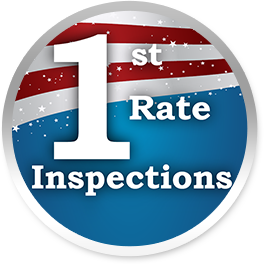YOUR SEPTIC SYSTEM IS YOUR RESPONSIBILITY
A Homeowner’s Guide to Septic Systems
Did you know that as a homeowner you’re responsible for maintaining your septic system? Did you know that maintaining your septic system protects your investment in your home? Did you know that you should periodically inspect your system and pump out your septic tank?
If properly designed, constructed and maintained, your septic system can provide long-term, effective treatment of household wastewater. If your septic system isn’t maintained, you might need to replace it, costing you thousands of dollars. A malfunctioning system can contaminate groundwater that might be a source of drinking water. And if you sell your home, your septic system must be in good working order.
This guide will help you care for your septic system. It will help you understand how your system works and what steps you can take as a homeowner to ensure your system will work properly. To help you learn more, consult the resources listed at the back of this booklet.
Top Four Things You Can Do to Protect Your Septic System
- Regularly inspect your system and pump your tank as necessary.
- Use water efficiently.
- Don’t dispose of household hazardous wastes in sinks or toilets.
- Care for your drainfield.

Why should I maintain my septic system?
Saving money
A key reason to maintain your septic system is to save money! Failing septic systems are expensive to repair or replace, and poor maintenance is often the culprit. Having your septic system inspected regularly is a bargain when you consider the cost of replacing the entire system. Your system will need pumping depending on how many people live in the house and the size of the system. An unusable septic system or one in disrepair will lower your property value and could pose a legal liability.
Protecting health and the environment
Other good reasons for safe treatment of sewage include preventing the spread of infection and disease and protecting water resources. Typical pollutants in household wastewater are nitrogen, phosphorus, and disease-causing bacteria and viruses. If a septic system is working properly, it will effectively remove most of these pollutants.
With one-fourth of U.S. homes using septic systems, more than 4 billion gallons of wastewater per day is dispersed below the ground’s surface. Inadequately treated sewage from septic systems can be a cause of groundwater contamination. It poses a significant threat to drinking water and human health because it can contaminate drinking water wells and cause diseases and infections in people and animals. Improperly treated sewage that contaminates nearby surface waters also increases the chance of swimmers contracting a variety of infectious diseases. These range from eye and ear infections to acute gastrointestinal illness and diseases like hepatitis.
The Maintenance Inspection
The maintenance inspection determines the need for pumping and to identify minor problems before they become major defects that threaten human health and the environment.
There are two maintenance inspection subtypes:
A first maintenance inspection; and
A routine maintenance inspection.
For the Home Inspector
The first maintenance inspection is designed for the home inspector to report to their client (1) the location of the system components, (2) how the system works, and (3) maintenance recommendations using visual-only, non-invasive inspection techniques.
For the Septic Contractor
The routine maintenance inspection assumes that the components have already been located.
As the Home Inspector, we go above and beyond the minimum standards when applicable. We will trace leach lines, locate and identify buried or non visible septic equipment, and provide extensive reporting as to the serviceability and condition of the system at the time of inspection.
The national average for septic tank repair costs between $750 and $3,000, with the average homeowner paying $2,000 to replace a broken lateral line. Repair prices may vary based on the problem and the amount of work required. A broken plastic lid for example can be repaired for just $150, whereas a full tank replacement can exceed $10,000 and an entire leach field replacement in a large space may cost up to $20,000.

Call us today!
We're available for all your pool and spa inspection needs, so don't hesitate to call 832-402-8164.
Why Hire
1st Rate Inspection?
We are a premier home inspection company serving Houston for 12 years with the highest quality, We guarantee thorough, confidential, and unbiased 4.9-star rating home inspections. Our professionalism, integrity, and personal attention are what sets us apart. You can call 1st Rate Inspections with your inspection needs and expect to receive the best custom-tailored home inspection specific to your property. Along with high standard inspections, we employ state-of-the-art technology to assist our home inspectors. In addition, our professional home inspectors give you instant feedback on the outcome of each inspection and allow you to view each documentation through a detailed report after your property has been inspected.
Contact Us



